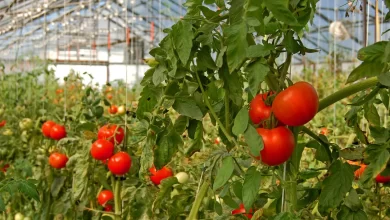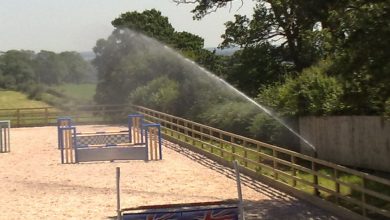The Benefits of Using Epsom Salt in Your Vegetable Garden

Epsom Salt is Magnesium Sulfate – Key Nutrients for Plants and Vegetables
As spring approaches, several of the country’s greatest gardeners advise utilizing Epsom salt as a low-cost option to start or enhance your garden.
Epsom salt, or magnesium sulfate, aids in seed germination, encourages plant growth, produces more flowers, enhances chlorophyll production, and repels pests such as slugs and voles. It also adds important nutrients to your usual fertilizer.
According to Cornell University Assistant Professor Neil Mattson, plants will display visual indications if they are deficient in a certain nutrient. If a plant’s leaves become yellow all over, it may indicate that it needs additional sulfate. Lower leaves that become yellow between the veins (but the veins remain green) may need additional magnesium. Because certain nutrient problems might seem similar, gardeners should contact their county extension agents before planting to test a soil sample or, if they discover a problem, they can bring in a plant for diagnosis.
“Plants require those building blocks,” explains Mattson. “Magnesium and sulfur are both necessary nutrients.”
Although magnesium and sulfur are naturally present in soil, they may be reduced due to a variety of factors, including high agricultural usage. However, unlike most commercial fertilizers, which accumulate in the soil over time, Epsom Salt is not persistent, thus it cannot be overused.
Gardeners may proactively blend Epsom salt with fertilizer and add it to their soil monthly, or they can mix one tablespoon with a gallon of water and spray leaves directly every two weeks, according to Mattson, who adds Epsom salt to his fertilizer for plants such as roses, pansies, petunias, and impatiens.
Master Gardeners promote Epsom Salt, and professional growers all around the globe use it on a daily basis. According to National Gardening Association tests, roses planted with Epsom Salt grow bushier and produce more blooms, and it also causes pepper plants to grow bigger than those fertilized simply with commercial fertilizer.
Here are some other tips for using Epson salt in the garden:
- Houseplants: Feed plants once a month with 2 teaspoons per gallon of water.
- Roses: 1 tablespoon per plant per foot of height; apply every two weeks. Scratch 1/2 cup into the soil at the base to promote blooming canes and healthy new basal cane development. To aid root recovery, soak unplanted shrubs in 1 cup Epsom Salt per gallon of water. When planting, add a spoonful of Epsom Salt to each hole.
- Shrubs (evergreens, azaleas, rhododendron): 1 tablespoon for every 9 square feet. Every 2-4 weeks, apply to the root zone.
- Lawns: Use a spreader to apply 3 pounds per 1,250 square feet, or dilute with water and apply with a sprayer.
- Trees: Use 2 tablespoons for every 9 square feet. Apply three times a year to the root zone.
- Garden Startup: 1 cup per 100 square feet is recommended. Before planting, incorporate into the soil.





